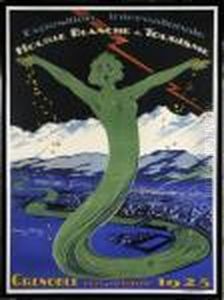Andry Farcy Paintings
Andry Farcy was a French art historian and curator who played a significant role in the French art scene, particularly during the early to mid-20th century. Born on November 13, 1882, in Grenoble, France, Farcy was initially trained as a lawyer before dedicating his life to the arts. His interest in art history and his subsequent career shift were influenced by his passion for contemporary art and the avant-garde movements of his time.
After completing his law studies, Farcy decided to pursue his interest in the arts. He became a curator at the Musée de Grenoble in 1919, where he would work until his death. During his tenure, he transformed the museum into a haven for modern art. Farcy was known for his progressive views on art and his commitment to promoting new and emerging artists. He was among the first museum curators in France to exhibit works by Pablo Picasso, Henri Matisse, and Fernand Léger, showcasing their pieces alongside older masterpieces and thus bridging the gap between historical and contemporary art.
Farcy's work at the Musée de Grenoble was particularly noteworthy for its embrace of modern art at a time when many other museums were hesitant to do so. He acquired numerous works by contemporary artists, significantly enriching the museum's collection and making it one of the most important provincial museums for modern art in France. Farcy was also instrumental in organizing exhibitions that were critical in establishing the reputations of several modern artists.
In addition to his curatorial work, Andry Farcy was a prolific writer and lecturer on art. He penned several books and articles, contributing to the discourse on modern art and its significance. His writings often reflected his belief that art should be accessible to everyone and that museums had a role in educating the public about the value of contemporary art.
Farcy's career was abruptly halted by his untimely death on August 13, 1949, in Grenoble. Despite his relatively short life, his contributions to the art world were significant, and his legacy can be seen in the continued prominence of the Musée de Grenoble as a center for modern and contemporary art. Today, Farcy is remembered as a visionary who helped to shape the landscape of French art museums and as an advocate for the modernist movements that have come to define 20th-century art.
